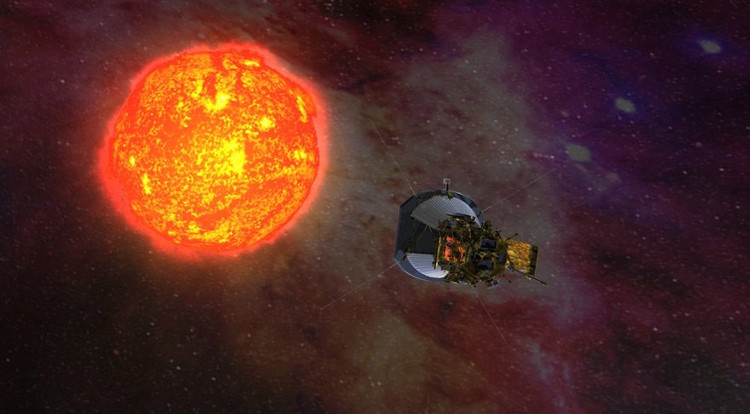NASA spends $ 1.5 billion bringing the spacecraft to the Sun.
In June 2018, NASA's Parker Solar space probe will leave Earth, carrying on its mission to discover the secrets of the Sun.
The probe is about the size of a small car, will fly around the Sun at a distance of 6 million kilometers, where the heat is about 1,300 degrees Celsius. .

Image of Parker Solar space probe simulation approaching the Sun - (Photo: NASA).
Paker Solar is expected to fly around the Sun 24 times with a speed of 692,000 km / h. After each round, Parker Solar approached the Sun's center and transmitted data to scientists from a distance of 143 million kilometers.
Expected in June 2018 Parker Solar will leave Earth, go toward Venus, circling the planet seven times to gain momentum into the Sun's orbit. As planned, Parker Solar will reach the Sun by 2024.
Nicky Fox, a scientist in the Parker Solar project, told the BBC: "We will be able to get close to the Sun, which contains many secrets that headache for generations of scientists for decades. Finally, we have the opportunity to implement a project to decipher the secrets for people. "
It is known that the Sun halo is a very dynamic place of the Sun with lots of solar wind, solar fire . things that affect the spatial weather and natural conditions on Earth.
The probe was named after Eugene Parker, an astrophysicist who predicted the existence of solar wind nearly 60 years ago. Mr. Eugene Parker is currently an emeritus professor at the University of Chicago.- America tries not to
- Historical landmarks for NASA's 60 years of space exploration
- NASA spends a lot of money to develop a
- NASA takes people to space in 2017
- NASA spacecraft runs out of fuel after a 7 billion km journey
- NASA acknowledged not enough money to bring people to Mars
- NASA tests landing on Mars with
- NASA's $ 3.3 billion spacecraft is about to commit suicide on Saturn
- 11 billion VND for biotechnology applications in agriculture
- The billion-dollar spacecraft communicating with NASA from the dead
- NASA connected with the spacecraft that had lost its signal two years ago
- Tomorrow the New Horizons spacecraft approaches Pluto
 Van Allen's belt and evidence that the Apollo 11 mission to the Moon was myth
Van Allen's belt and evidence that the Apollo 11 mission to the Moon was myth The levels of civilization in the universe (Kardashev scale)
The levels of civilization in the universe (Kardashev scale) Today Mars, the sun and the Earth are aligned
Today Mars, the sun and the Earth are aligned The Amazon owner announced a secret plan to build a space base for thousands of people
The Amazon owner announced a secret plan to build a space base for thousands of people